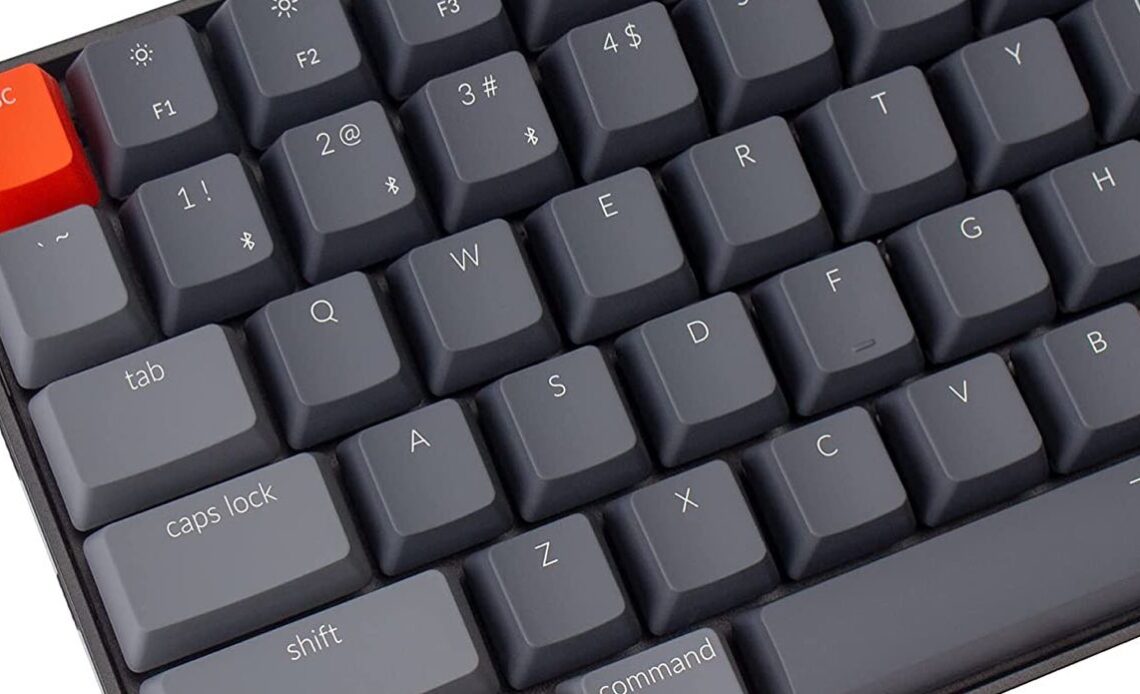
Above: Keychron’s K2 wireless Bluetooth keyboard.
BitDepth#1331 for December 06, 2021
A home office is becoming more of a lived-in reality than an unforeseen disruption for more of us.
Adjusting to that change calls for a degree of comfort and efficiency that should be encouraged in more work from home installations.
At the core of working from home is a desk space.
The perfect desk is something that I’ve pursued ever since I established my first workspace 45 years ago after commissioning a semicircular wrap desk from Oscar Harragin, a joiner I’d watched build an arc-shaped reception desk when I worked at AMPLE.
That creation, still sorely missed, was built in a 140 degree arc and had a built-in light table for negative and transparency sorting.
Why do I pursue this desk design?
Because one of my workspace goals has always been to have every important tool or resource that I work with in arm’s reach and an arc does that better than a rectangle.
I’ve never done better than that first desk, but my current desk, a kidney wrap design that’s built into a wall corner, comes close.
It fulfils my ‘no legs’ mandate for desks with one concession to gravity, a 45 degree brace for the furthest lip of the wrapped surface.
After working with it for more than two decades, I still pursue new ways to make better use of it.
Desktop real estate is precious.
The most important thing you can preserve on any desk is space, and every item takes up some of it.
If you connect speakers to your computer and good audio is important, consider wall-mounted systems. If your speakers don’t support direct mounting, there are minimalist shelves you can consider.
You should also get a computer monitor off your desk. One option is a desk-mounted arm that connects via the monitor’s VESA mount .
I prefer wall-mounted arms (always use expanding bolts), but those only make sense if the desk will be in the same place for a while.
Apart from reclaiming the space on your desk, a monitor on a proper arm is easier to move around. Be sure to get an arm made for the weight of the monitor you use.
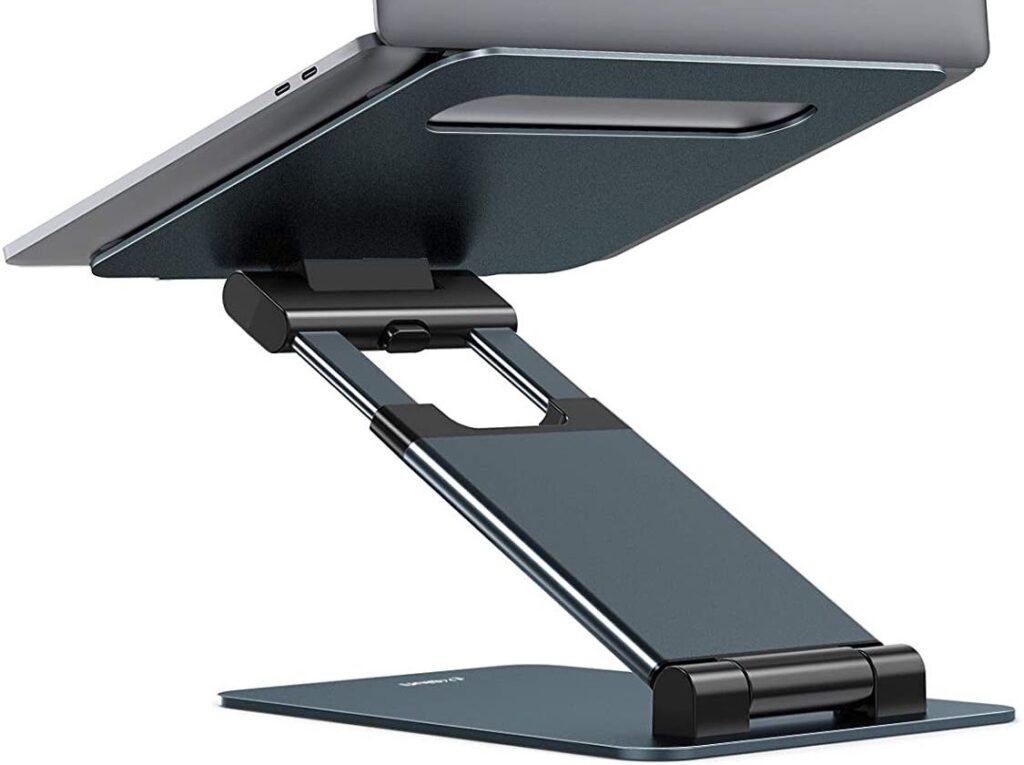
If you use a laptop for more than three hours straight, consider getting a laptop riser.
Why would you want to do this?
When you use a laptop on a desk, almost every part of your body is ideally positioned for the work at hand, or can easily be arranged that way, except for one.
A laptop forces you to look down at an incrementally small angle, putting a small but insistent pressure on your neck muscles and encouraging your body to become hunched.
A laptop on a riser addresses that, allowing you to look straight ahead to the screen.
I’ve only recently become a convert to this principle, because most risers offered only a fixed position. I didn’t want that.
There’s a new class of risers made for custom adjustment that I like quite a lot.
The support I chose is on the higher end of these devices, because anything that holds a laptop above your desk should be robust.
Once you’ve decided to do that though, you’ll need a keyboard. Forget those pictures that suggest you can type on a laptop on a riser, that’s wooing carpal tunnel syndrome.
I’m channelling old school with the KeyChron K2, which throws back, way back, to the dawn of computing when keyboards chattered back at you when you used them.
It’s an adjustment from chiclet style keyboards and I’m not back up to my regular typing speeds yet.
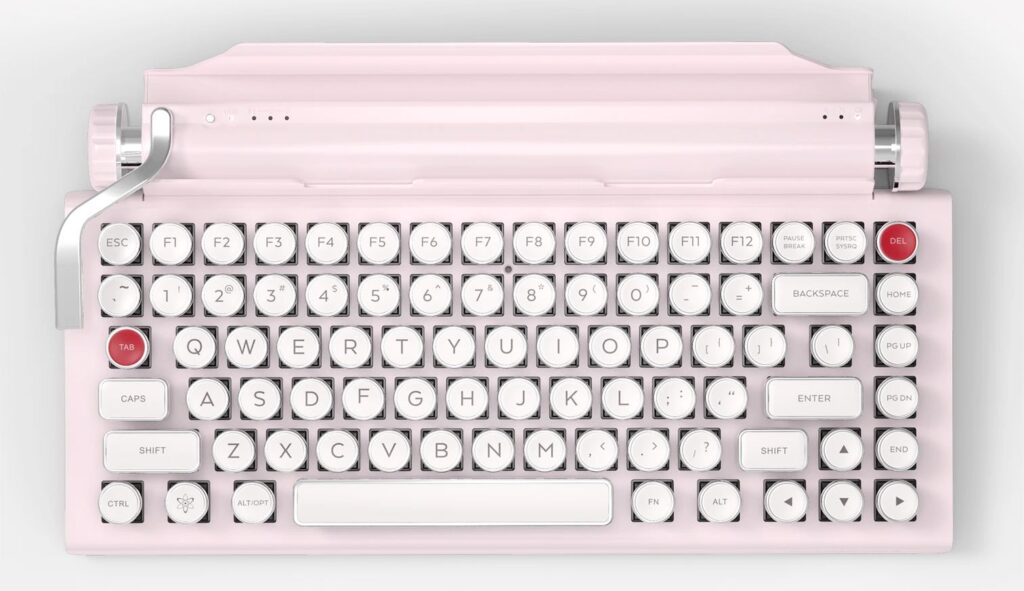
It wasn’t even my first choice, but the Qwerkywriter was completely outside my budget for this desktop revamp.
The last mousepad I owned was in 1999, but now I’m going to try a desk mat, which is a mousepad writ large, at three feet wide.
Havit’s polyester cloth version backed by rubber worked out better for me than a rival felt version, which is more attractive, but too thin for my taste. My local upholsterer did a great job of adapting it with a curve to match my desk.
While I have a task light that I use regularly, there always seemed to be a dark spot on my desk right in front of my main monitor.
If you have that problem, consider a monitor light, which illuminates the area right in front of your work space. I don’t use it often, but when I need that light, it’s perfect.
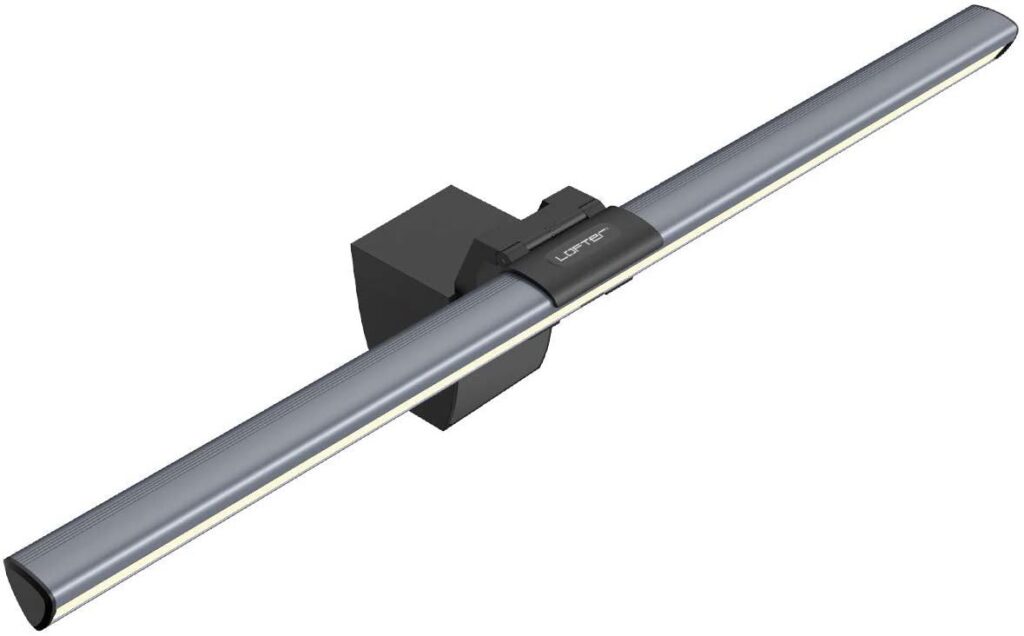
Successful workspace management is enhanced by space saving gadgets and good lighting, but be alert for things that introduce hiccups to your workflow.
One example. I’d be charging my phone and completely miss an important alert. The solution? A 45-degree wireless charger that sits alongside my workstation.
Reluctant to disconnect your laptop from a tangle of cables to go sit somewhere else for a while?
With a USB-C dock, everything gets plugged into the dock with just one cable to disconnect when I want to pick up the computer.
The two key pandemic driven changes to my work space are a 1080p external camera and a light source for video conferencing.
I’ve finally got those sorted with clamp arms attached to a shelf that keep them just out of my line of sight, but accessible when needed.
Final tip.
A computer desk will be a spaghetti storm of cables. Invest in velcro cable ties and sticky cable clips to tame cable bundles and bind them neatly into runs that are out of sight.
Always remember to bind power cables separately from data cables.
Desk planning words to live by: Out of the way until needed, easily accessible when required.

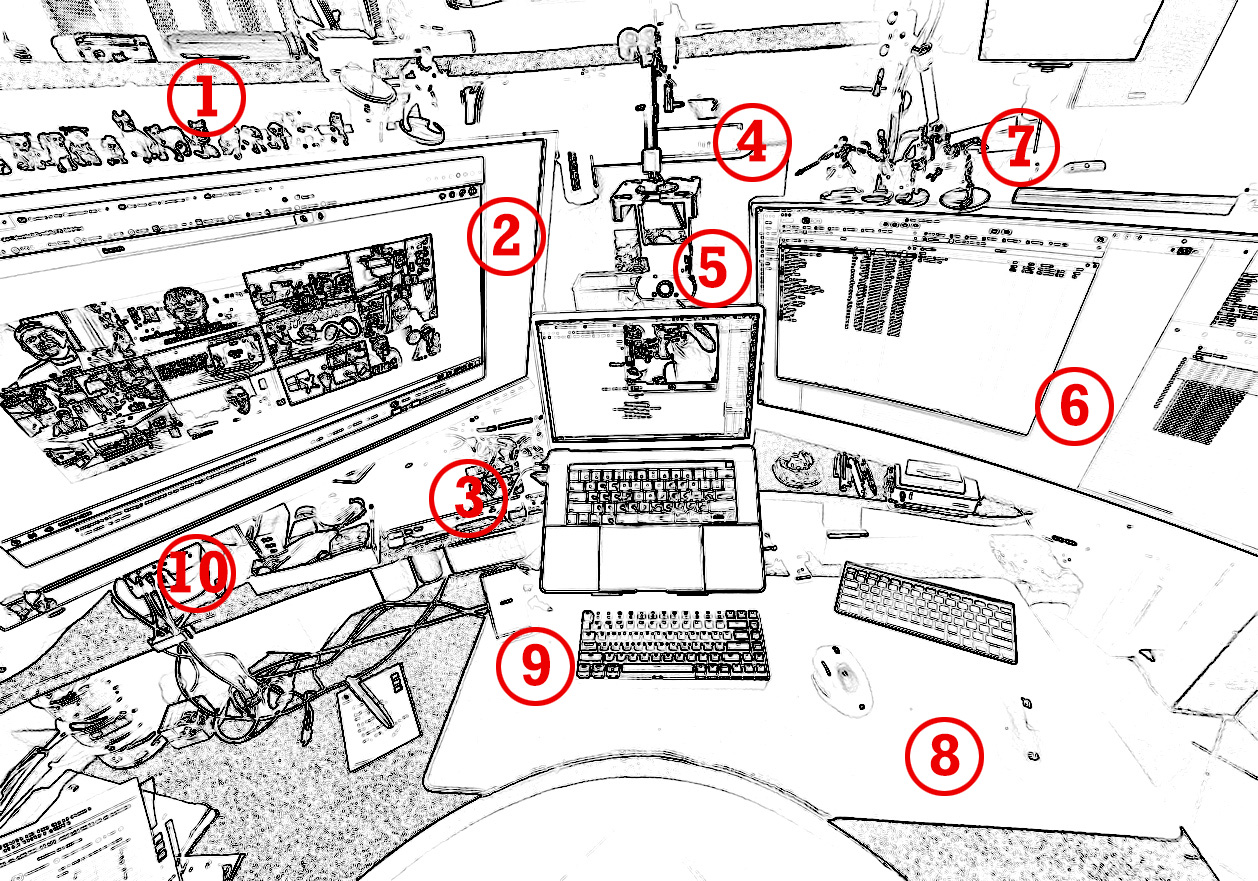
Key
1 – The top of my monitor is also a mini-action figure display, currently featuring my little plastic dog collection from my days of shopping at Small Dog Electronics, a wee little toilet from a candy packet that reminds me that what I’m working on is probably poop and the Killmonger half of the war of Wakanda that’s currently raging in my workspace.
2 – This Samsung monitor is hooked up to both my laptop and workstation server and switches between them at the tap of a button. If you ever see me looking to my left during a Zoom call, it’s because that’s where all the screens are. Mounted on a heavy-duty articulating arm to the wall.
3 – Thunderbolt dock/power supply with a truly absurd number of things connected to it, including a Blu-Ray data burner, USB-3 hub and ethernet. One cable jacks into the laptop.
4 – The 2009 MacPro tower that runs the office and serves files.
5 – Cheap but surprisingly good 1080p camera that I got from NewEgg when there weren’t any to be found in May 2020. The camera in MacBooks has been terrible until the new M series released just a few months ago. The rig folds up and out of the way when I’m not using it.
6 – Main screen for the MacPro tower. Mounted on an extended televison-class VESA arm. No up and down articulation, but there’s no room for it anyway. Directly below is a standard USB-2 hub and card reader for the tower.
7 – The LED light that illuminates me during videoconferencing. Runs off batteries. To the left is the assembled might of the Wakandan good guys. To the right is the Lofter monitor light.
8 – Havit’s deskmat after upholsterer attention to craft the curve.
9 – Keychron K2 at right next to a 45-degree inductive charger. The laptop is roughly eight inches off the desk at its closest point, supported by the Nulaxy riser.
10 – Extension cable with standard power outlets, three USB-A quick charging outlets and one power delivery port rated at 45W.
Wondering about the right chair? This column, early in the pandemic, talks about that.


